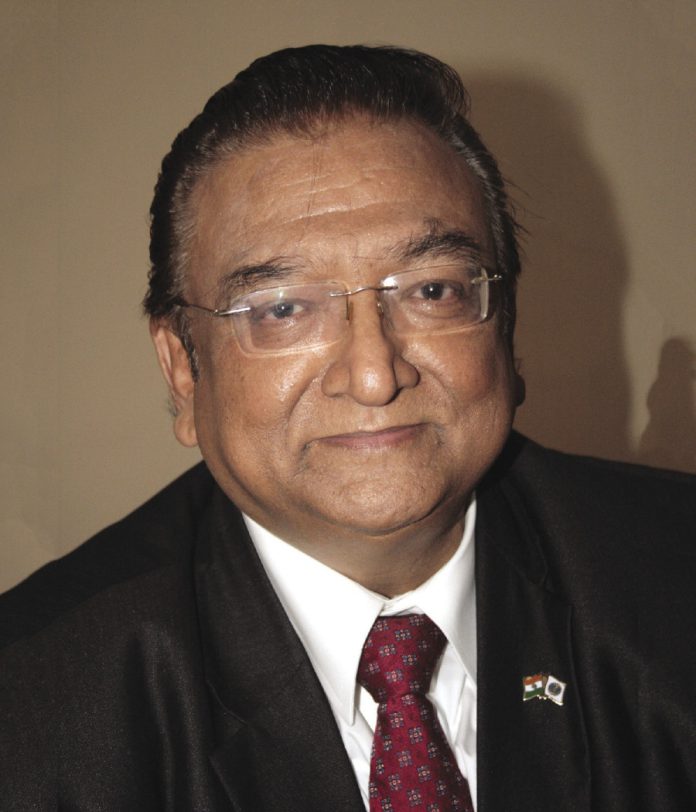Subhash Goyal, Immediate Past President of IATO and Chairman, STIC Travel Group speaks about the slow pace of the Indian inbound growth and challenges which the industry is currently facing
How would you explain the emerging trends in inbound tourism? Have you noticed any new source markets emerging for inbound?
Not only in India, globally the tourism trends have been changing. More people are travelling on cruises which have become very popular all over the world. Unfortunately, India does not have even a single world class cruise terminal, so we need to move fast in this direction if we have to capture this global trend of cruising. Religious Tourism is another big segment which is on the increase. India being the birth place of four great religions: Hinduism, Buddhism, Sikhism and Jainism have a huge potential.
Medical Tourism also has a huge potential and is an emerging trend which India needs to capitalise on because we have some of the best hospitals in the world where treatment is available with 1/5th of the cost of America and Europe.
Senior citizens and differently-abled people are travelling more and more. India is not able to get into this emerging trend, even though most of our hotels are 4 star & 5 star hotels have ramps and other facilities. The majority of our monuments and smaller hotels do not cater to this segment at all. MICE is another new trend and India is seriously building world class convention centers and we already have an organisation called Indian Convention Promotion Bureau, to cater to this emerging trend.
Adventure and Sports Tourism is another segment which is growing very fast and India needs to be prepared to cater to this segment. Our vast coastline and the world’s highest mountain ranges can help us in develop Adventure Tourism in a big way.
How was the last inbound season for tour operators and what is your expectation from the coming season?
The last inbound season was not very good because the leisure traffic did not increase but there was an increase in VFR (Visiting Friends & Relatives) traffic. The next season seems to be more promising because the government has promised to remove all the snags in the E-Visa by making it multiple entry and enabling tourists to apply six months to one year in advance and also be installing bio-metric machines at all immigration counters to enable speedy clearance. Moreover, the Ministry is also launching aggressive electronic and social media campaign.
Despite e-visa scheme, inbound growth has not been on the expected lines. What is your take on this?
The main reason is as mentioned earlier; the implementation of e-visa has not been very smooth. Moreover, there has been a lot of adverse publicity of the law and order situation in India. Further we have not been able to promote our country on the electronic media in local languages of the respective countries like Chinese, Japanese, Korean, French, Spanish etc.
What challenges inbound tour operators are facing now and what is the suggested solution, according to you?
The biggest challenge in the Indian Tourism Industry is the high taxes by which we have out-priced ourselves from neighbouring countries. So, if the government is really serious in promoting tourism, then they have to reduce the taxes so that we become competitive. The main problem is Service Tax and Luxury Tax on rack rates. The high taxation is killing the goose that lays golden eggs and even Indian companies are going abroad in Bangkok, Malaysia, Singapore and Sri Lanka to do their meetings and conferences. Lot of Indian families are celebrating their weddings in neighbouring countries.
With the introduction of GST we are hopeful that the Government will put Tourism in the lowest slab and under no circumstances it should be more than five per cent. Also, India is not perceived as a safe destination and it is very important to change this image of India. The second biggest challenge is cleanliness in and around Tourist Places and Monuments.
To overcome these above challenges I suggest the following solutions;
– To do electronic and social media advertising in Chinese, Japanese, Spanish, Russian and other local languages rather than concentrating on the English print media only.
– To appoint an international PR Agency to counter the negative news in the International Media.
– There should not be more than 5% tax on the tourism industry.
– E-Visa should be available one year in advance and tourists should be able to get multiple entry visas to visit neighbouring countries.
– E-Visa is taking a lot of time at the airports as there are only one or two counters, every immigration counter should have a Bio-Metric machine & should be able to clear E-Visa passengers with all the other passengers without any delay.
– Domestic Airfares need to be regulated and the upper limit of the fare has to be fixed so that there is no exploitation.
– Tourism should be made a part of the concurrent list.
India should have an Open Sky by allowing International carriers the freedom so that India is use for transit and thereby it becomes a hub for tourists from all over the world because India is very centrally located.
The GST has been approved and industry with the help of Ministry of Tourism is trying hard for tourism to be placed in the lower bracket. If the government does not agree and put tourism on the higher side (say 18%), what will be the impact on the sector?
The GST should be introduced at the lowest slab and definitely not more than 5%. With the introduction of GST we are hopeful that the Government will put Tourism in the lowest slab & under no circumstances it should be more than 5%. This will result in uniformity of taxes.
How do you see the impact of New Civil Aviation Policy on tourism growth?
I congratulate the present government for coming up with a pragmatic and transparent Civil Aviation Policy. Unfortunately, this policy by encouraging regional flight operations will promote tourism to the remotest corners of the country. One thing I could not understand is on one side when the government has imposed a sealing on the regional routes why they have not imposed a similar sealings on the national trunk routes where during peak season tourists and lower middle class people are unable to travel because the fares skyrocket and they cannot afford it.
The government has launched a number of schemes and events : Swachch Bharat Mission, Swadesh Darshan (Integrated Development of Theme Based Tourist Circuits) PRASAD (National Mission on Pilgrimage Rejuvenation and Spiritual Augmentation Drive), HRIDAY (Heritage City Development and Augmentation Yojana), helpline, Buddhist Conclave, Tourism Investors Summit etc.. What change do you see on the ground?
These are all wonderfully sounding schemes but the result will take some time. Even though this sounds very good but there is no time bound implementation deadline in any of these schemes, so they remain pipe dreams until they are implemented.
What is your opinion on the impact of BREXIT on inbound tourism to India as UK is one of the main source markets for India?
The latest trend thus shows a 7.3 per cent growth but unfortunately, this growth consists of mostly Business and VFR (Visiting Friends & Relatives) traffic. Leisure traffic infact has gone down because of terrorism and economic slowdown in Europe and the impact of Brexit on the European economy mainly UK which is one of the largest markets for India.
Even though the Ministry figures show an increase in Inbound Tourism but the actual fact is that it is a notional increase and the leisure tourist has not gone up as most of the hotels occupancy is low and the people who are coming to India are mostly NRIs who are coming to visit friends and relatives or Indian origin investors who have been motivated by our Hon’ble Prime Minister to invest in India.
What is your take on the Ministry of Tourism’s promotional and marketing activities in overseas market?
As mentioned earlier, the ministry has to forget about print media and focus on social media & electronic media that also in the local languages of the source markets. Unless we market India in Chinese, Japanese, Korean, Spanish, French and Russian we will not receive the desired growth rates which our Prime Minister wants to see.






